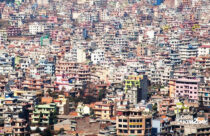What are the main sources of air pollution in Kathmandu valley ?
The Kathmandu Valley is one of the most polluted urban areas in the world, with extremely high levels of particulate matter (PM) and other air pollutants.
The primary sources of air pollution in the valley include vehicle emissions, dust from unpaved roads, brick kilns, garbage burning, and emissions from industries.
The geography of the Kathmandu Valley, surrounded by mountains, contributes to the trapping of air pollutants. High population density, rapid urbanization, and a growing number of vehicles have exacerbated the air pollution problem in recent decades.
The main sources of air pollution in Kathmandu Valley are:
1. Vehicular emissions
The rapidly increasing number of vehicles, many of which are old and poorly maintained, is a major contributor to air pollution in Kathmandu. Vehicular exhaust from cars, motorcycles, and heavy vehicles releases particulate matter (PM2.5 and PM10), nitrogen oxides, and other harmful pollutants.
2. Industrial emissions
Emissions from industries like cement factories, brick kilns, and other manufacturing units located in and around the valley release particulates, dust, and gases that degrade air quality.
3. Solid waste and biomass burning
Open burning of solid waste, agricultural residues, and biomass fuels like wood and cow dung for domestic cooking and heating is another significant source of air pollutants, especially particulate matter.
4. Construction activities
Dust generated from construction sites and related activities like stone crushing contributes to particulate pollution in Kathmandu.
5. Topography
The bowl-shaped topography of the Kathmandu Valley, surrounded by mountains, restricts air movement and traps pollutants, exacerbating the air pollution problem.
The results consistently highlight vehicular emissions, industrial activities, biomass burning, and the valley’s unique geography as the key factors responsible for Kathmandu’s extremely poor air quality, especially during the winter months.
















